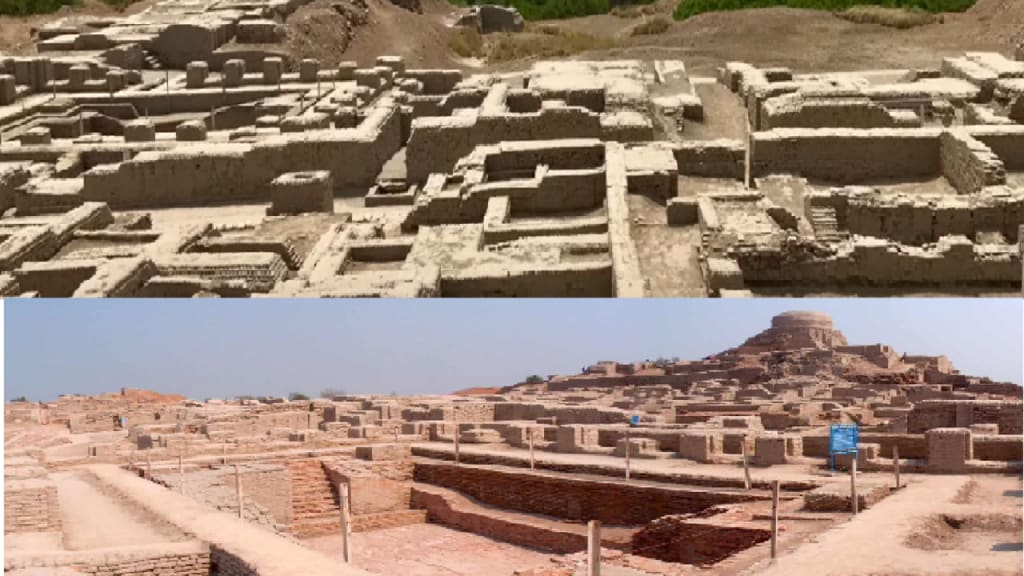
The onset of Human civilization started several millenniums ago with some of their mysteries solved or revealed and mostly unknown or based on assumptions.
In many parts of the world, there are numerous ancient ruins and structures which are still lying there and waiting to be solved and excavated. Who knows what kinds of secrets lie beneath them? The oldest known ancient civilizations are as we know Mesopotamia (4000 BCE), Egypt(3100 BCE), and the Chinese civilizations (2100 BCE).
But there is another one, a bronze age civilization lying in south Asia, mostly covering the Indo-Pak subcontinent called the Indus valley civilization (3300 BCE) due to their dwelling along the river Indus.
Archeologists, excavators, geographers as well as many other people take a lot of interest in these ancient ruins and wreckage, and at this point, the question that arises is, why? why do these and many others take such a deep interest in these kinds of places?
Well, I guess the answer would be simple, it’s like why do people like dinosaurs? I suppose it’s the thrill and the mysteries that people want to know and reveal, as by nature man is curious and likes to know the secrets no matter of some person or nature itself.
If we take a look at the reason for the fame of Mesopotamia or the Egyptian civilizations, then it is clearly understood that there are unique and mysterious structures and supernatural or mythological formations in those civilizations, for instance, most common of all are the pyramids, where their designs, hugeness, calculated construction and secrets lying beneath are the lure. Moreover, their way of worship and bizarre Idol samples and stone tablets having carved structures with unnatural bodies and body parts resembling a mix of a human and animal, etc. In addition, their ways of governance (pharos), battle, weapons, burial, and funeral methods like mummification, etc. All these tend to create and arise the man’s curious nature to explore.
The same goes for the Mesopotamia civilization where sometimes people try to trace the missing pieces from religious scripts and sacred texts, thus making it more delphic and strange.
So, seeing these, what makes the Indues valley so special or unique from other civilizations when there are no pyramids, mummies, pharos, and not even much of weapons with just a few elements of similarity?
Up until now, what has been unveiled about the Indus valley civilization shows that those people were not interested much in wars and battles nor in building giant structures like pyramids provided that the period of this civilization was almost the same as Egyptian civilization.
Moreover, upon excavations, it was found that the Indues valley people were quite keen on cleanliness and hygiene as bathrooms were found in various house ruins, and a giant bathing structure called “the Great bath” was located in their cities (perhaps for some ritual purposes).
This civilization is supposed to have covered an area of about 900 miles along the Indues river, spanning from northeast Afghanistan, covering most of Pakistan to northwest India. Important cities of the Indus valley civilization in Pakistan are Harappa, Kot diji, and Mohenjo-Daro while in India Kalibangan and Rupnagar are well known, but the two major cities which are thought to be the capital of this civilization are the Harappa and Mohenjo-Daro (Mohenjo-Daro means “the mound of the dead”).
Other features that separate Indues valley civilization includes their sewerage and water systems, as canals were found in the whole city with their astounding arrangement for water entering and exiting a house or a building. This civilization is thought to be bigger than the Egyptian civilization and estimated population of around 5 million people.
They found the art of building burnt brick houses, the cities were built in ordered form and arrangments were sensible.
And one interesting feature of this civilization was their little to no interest in battles or wars as the tools, ornaments, utensils, Idols, tablets, or weapons found during excavation show that they were not much of a warrior people but more of a peaceful and civilized people.
Now about their demise, there are many assumptions about it, some think the civilization ended due to natural phenomena or disasters like floods or earthquakes and some scholars believe they were invaded by nomads known as Aryans. Whatever the reason is, the Indus valley civilization is ought to be ended around 1800 BCE.
About the Creator
Mr.Khan
I like to write in Education, Social, History, Tech & cyber sec, sometimes psychology/sentiments too.
Oh, and btw love to talk about horror and paranormal stuff ;)






Comments
There are no comments for this story
Be the first to respond and start the conversation.